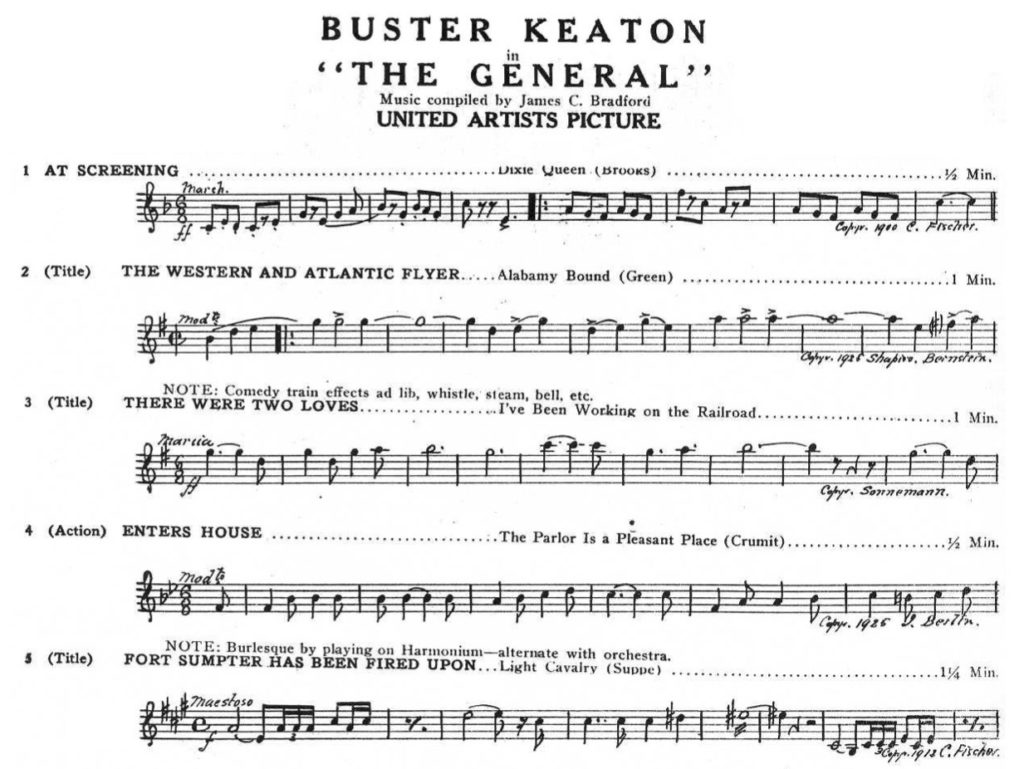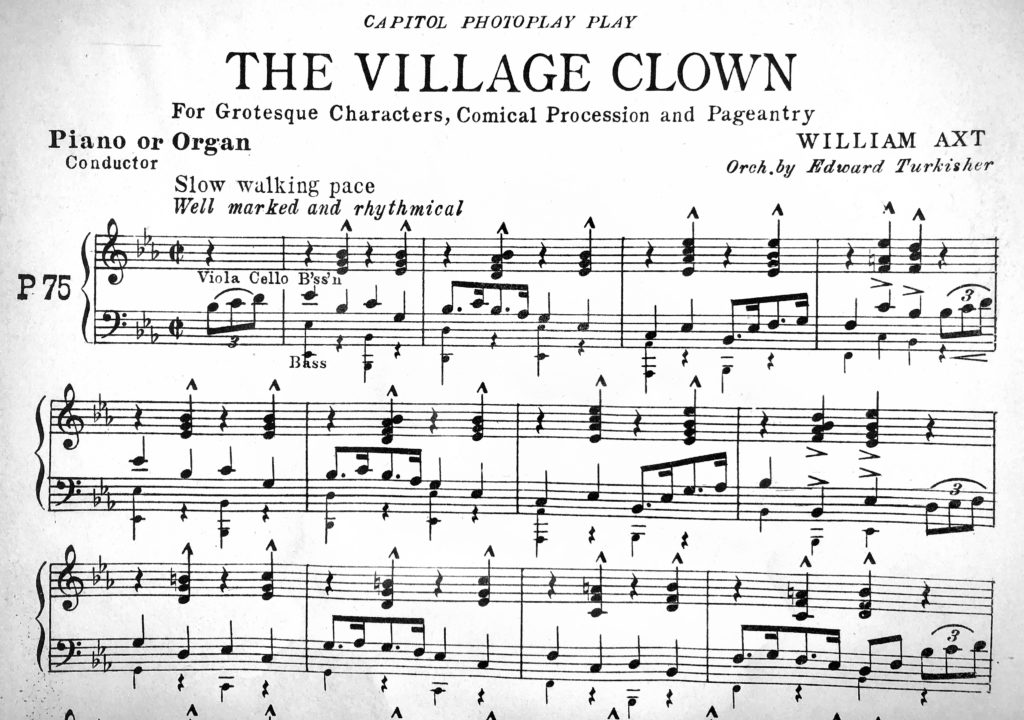I know that song from Bugs Bunny cartoons. There’s no other way I’d had have heard of it, except that composer Carl Stalling stuck it in scenes where Bugs or someone else was eating. Carl Stalling had played the organ in movie houses in the 1920s, and this practice of using “song title puns” has its roots in silent era film accompaniment.
It may have grown out of the orchestra pits in vaudeville houses. A dog act would be welcomed to the stage by “The Whistler and his Dog”, a clown act with “Vesti la Giubba/Ridi Pagliaccio”, a pantomime horse act with “Horses! Horses!” etc.
The cue sheets that survive from the silent era are full of evidence of going by the titles of a popular song being the reason for its being chosen to accompany a scene. It also manifests in cue sheets simply as a way to align a mood music cue.
The cue sheet for Buster Keaton’s The General introduces us to the film at its very beginning, which sets the scene as being in the South, by having the orchestra play the pop tune “Alabamy Bound”, which was a hit in 1925. The moment in the engine cab that introduces us to Buster — “There were two loves in his life…” — is accompanied by “I’ve Been Working on the Railroad”. The scene where Buster courts his girl in the parlor of her family home is matched with the tune “The Parlor is a Pleasant Place”.
Regardless of whether the mood or feel of the piece of music fits the moment.

The original cue sheet score for Stark Love, Karl Brown’s Tol’able David-type backwoods melodrama, has as its recurring theme for the young woman’s father a piece called “The Village Clown” by William Axt. The family lives in a small village, and the father is very old-fashioned and perhaps a bit behind the times in relation to what his daughter wants. Hence, I’m assuming, this match-up. Did audiences know the name of the mood cue?
The tune itself has more of a feel like the “I’m Bringing Home a Baby Bumblebee” you may remember from Bob Clampett’s WB cartoons. It’s also used in the recorded track for Keaton’s Spite Marriage, as Buster’s theme, further cementing the film for me as “the birth of stupid Elmer”. But the tune seems out of place in a picture like Stark Love, to me anyway. The cue’s title matches the point it was chosen for, I suppose, but the music itself — without knowing its title — comes off to me as making the character appear a little goofy as opposed to supporting his old-world traditional leanings that are in opposition to his daughter’s intentions.

This is one of the bits of era-straddling that I think has to be taken into account silent film accompaniment. Yes, using song title puns was done quite a bit in the silent era, as was recognizable music. Doing so today does make your accompaniment historically accurate. However, a contemporary audience has a very different relationship to recognizable music and song title puns.
Today, hearing something in the soundtrack that you already know or which, even more so, is a verbal match-up to what’s onscreen tells the audience something very different. It means: don’t take what you’re seeing seriously…it’s silly.
Silent movies have a hard enough time being taken seriously, being culturally at least three generations older than today’s viewers. I don’t think that reminding an audience that these films are out of step helps these movies. They need all the help they can get, especially when we’re trying to drag people past the word “silent” just to get them in the theater. They don’t need to hear “Yellow Submarine” or “Under the Sea” when Erik the Phantom submerges in the water of the catacombs under the streets of Paris.
What I aim to do is pull the audience up into the film and fuse them with it and with the internal drama of what’s in the scene. I may not always achieve this, but I try to keep the audiences’ musical consciousness and expectations of film music in mind, and try not to do anything that pushes them back into their seats.
The song you mentioned is actually a piece by Billy Rose from Charlot’s Revue of 1926. I have the vintage sheet music, so Stalling was referring back to a song that many people would have known.
https://youtu.be/u7Dc8PkXPUg This is a famous coupling with Jack Buchanan & Gertrude Lawrence. Mary Mallory is correct. I always connect this 20s song with London-born Gertrude Lawrence(a school chum of Noel Coward, at least at acting school).
“Coffee, etc” was recorded a lot by dance bands in the 20’s. Here is one by Roger Wolfe Kahn (son of Movie financier Otto Kahn)
https://youtu.be/wnyjKR5hJKM
Yes,many bands did record this song and Roger Wolfe Kahn was a good one. His dad did not want him to go into showbiz but the rest is history. I sold many copies of an LP of the Kahn band that I imported from specialist shop in the Netherlands(The Hague) I used to swap stock with. Great memories.
Hey, glad to learn the title of that bumblebee song, been wondering for years what it was! If I recall correctly, it’s also used in the Kino set for Keaton’s High Sign too.
Actually, the title of the song is “Arkansas Traveler,” composed by Sanford C. Faulkner in the 19th Century.
On the other hand, association with prior films isn’t necessarily a bad thing. In the Biffle & Shooster shorts, I often use certain classical pieces because of their use in classic cartoons or horror movies. “Bride of Finklestein,” for example, features “Toccata and Fugue in D Minor,” “The Sorcerer’s Apprentice,” “Night on Bald Mountain” (all of which were used in “Fantasia”) and Liszt’s Piano Sonata in B Minor for the entrance scene which mimics the identical moment in “The Black Cat.” People seem to enjoy the sub-references.
The B&S films are just the right genre for this sort of music quoting.